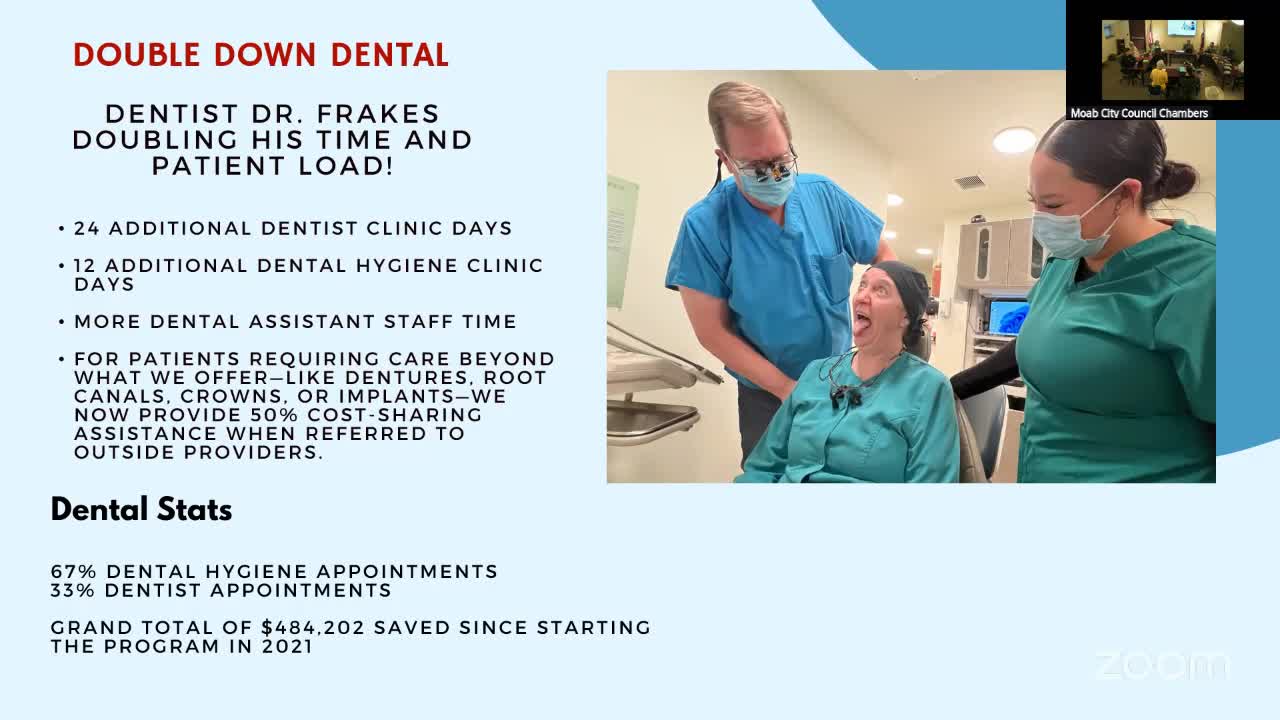Moab Area Community Land Trust reports 100 households at Bridal Crossing, outlines long-term model
October 15, 2025 | Moab City Council, Moab, Grand County, Utah
This article was created by AI summarizing key points discussed. AI makes mistakes, so for full details and context, please refer to the video of the full meeting. Please report any errors so we can fix them. Report an error »

Representatives of the Moab Area Community Land Trust (MACLT) updated the City Council on Oct. 14 about progress at Bridal Crossing and outlined next steps for replicating the model.
Caitlin Myers, identified in the presentation as executive director, and several board members described Bridal Crossing as a 40+ acre project that has finished infrastructure and housing phases and now houses about 100 people in phase-completed units. The site plan presented to councilors showed single-family homes, twin homes, townhomes and apartments; speakers said the full buildout would approach 300 units and—when finished—represent roughly $100 million in total development with more than $40 million invested so far in infrastructure.
A key element of the model is long-term land leases: MACLT described a 100-year, renewable lease that separates land ownership from house ownership to enforce deed restrictions that preserve affordability. Speakers said deed restrictions limit resale profit, require local employment or prior local work history for occupants and set AMI (area median income) eligibility bands for different phases—examples mentioned ranged from about 70% to 120% of AMI depending on unit type.
MACLT representatives said the trust is not a developer; rather, it enables and partners with local contractors and developers and focuses on stewardship, resident training and resale procedures that preserve affordability. They described partnerships for dental services, grants for infrastructure and an on-site stewardship board that manages community events and resident support.
Why it matters: Council members were given detail on an implemented, durable affordability model that already houses residents and is intended to be replicable and permanent. Speakers emphasized the project’s potential to serve local workers and to be a model for other rural communities.
Requests and next steps: MACLT asked for continued municipal communication and collaboration as the trust plans its next phases. Councilmembers asked questions about tax impacts, commercial nodes in the plan and zoning changes needed for multifamily areas.
Ending: MACLT offered tours and asked the city to keep the project in ongoing planning conversations; staff noted some of the site’s commercial parcels would require rezoning before development.
Caitlin Myers, identified in the presentation as executive director, and several board members described Bridal Crossing as a 40+ acre project that has finished infrastructure and housing phases and now houses about 100 people in phase-completed units. The site plan presented to councilors showed single-family homes, twin homes, townhomes and apartments; speakers said the full buildout would approach 300 units and—when finished—represent roughly $100 million in total development with more than $40 million invested so far in infrastructure.
A key element of the model is long-term land leases: MACLT described a 100-year, renewable lease that separates land ownership from house ownership to enforce deed restrictions that preserve affordability. Speakers said deed restrictions limit resale profit, require local employment or prior local work history for occupants and set AMI (area median income) eligibility bands for different phases—examples mentioned ranged from about 70% to 120% of AMI depending on unit type.
MACLT representatives said the trust is not a developer; rather, it enables and partners with local contractors and developers and focuses on stewardship, resident training and resale procedures that preserve affordability. They described partnerships for dental services, grants for infrastructure and an on-site stewardship board that manages community events and resident support.
Why it matters: Council members were given detail on an implemented, durable affordability model that already houses residents and is intended to be replicable and permanent. Speakers emphasized the project’s potential to serve local workers and to be a model for other rural communities.
Requests and next steps: MACLT asked for continued municipal communication and collaboration as the trust plans its next phases. Councilmembers asked questions about tax impacts, commercial nodes in the plan and zoning changes needed for multifamily areas.
Ending: MACLT offered tours and asked the city to keep the project in ongoing planning conversations; staff noted some of the site’s commercial parcels would require rezoning before development.
View the Full Meeting & All Its Details
This article offers just a summary. Unlock complete video, transcripts, and insights as a Founder Member.
✓
Watch full, unedited meeting videos
✓
Search every word spoken in unlimited transcripts
✓
AI summaries & real-time alerts (all government levels)
✓
Permanent access to expanding government content
30-day money-back guarantee


